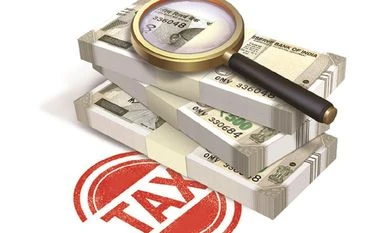On the back of robust tax collection, the ratio of direct taxes to gross domestic product (GDP) this financial year is likely to be the highest in this century so far.
This, along with strong goods and services tax (GST) collection, may drive up receipts from central taxes as a proportion of GDP to the highest level or close to the highest since 2008-09 despite subdued excise and customs duty receipts.
This will be due also to lower nominal GDP projected in the first advance estimates for 2023-24.
Ratings agency ICRA has estimated direct tax collection will overshoot the Budget Estimates (BE) by Rs 1 trillion. If this happens, this will make direct tax collection Rs 19.23 trillion in RE.
With nominal GDP estimated at Rs 296.58 trillion, the direct tax-GDP ratio will rise to 6.48 per cent in the RE for FY24. This will be the highest since 2000-01. The BE had projected a direct tax-GDP ratio at 6.04 per cent. Direct tax buoyancy will, however, be at 1.99, higher than the 1.3 pegged in the BE for FY24 and the 1.18 during 2022-23.
However, direct tax buoyancy was higher at 2.52 in 2021-22. It was 2.32 in 2000-01, 2.59 in 2002-03, 2.19 in 2003-04, 2.42 in 2006-07, and 2.27 in 2007-08.
Tax buoyancy measures change in tax growth as a result of GDP expansion. Buoyancy at more than one means the GDP growth rate has led to a higher increase in tax receipts. GDP at current prices is officially estimated to grow by 8.9 per cent against 10.5 per cent assumed at the time of Budget presentation last year. The projection by the first advance estimates for nominal GDP was less by Rs 5.17 trillion than the Rs 301.75 trillion assumed in the Budget for FY24.
However, this could not arrest robust tax collection.
Besides direct taxes, central goods and services tax (CGST) yielded Rs 6.26 trillion during April-December — 77 per cent of the Rs 8.12 trillion estimated in the BE for 2023-24. However, customs duty rose just 0.26 per cent at Rs 1.42 trillion till November FY24. This is far less than the 9.25 per cent growth estimated in the Budget.
On the other hand, Union excise duty collection fell 7.88 per cent at Rs 1.76 trillion in the first eight months this financial year. This is against 6.26 per cent growth projected in the Budget for FY24.
ICRA estimated robust direct tax collection and GST receipts would make up for the fall in Union excise duty and subdued customs duty collection. These will yield Rs 60,000 crore more over the BE, according to ICRA calculations.
If that happens, tax receipts would stand at Rs 34.21 trillion under the RE against Rs 33.61 trillion estimated in the BE. This gives a tax-GDP ratio of 11.53 per cent for the year. This is close to 11.54 per cent witnessed in 2021-21, the year of the second wave of Covid. A bit of higher tax collection would make the tax-GDP ratio during 2023-24 the highest since 2008-09 (see chart). The BE had assumed the tax-GDP ratio at 11.14 per cent for FY24.
Despite this, likely tax buoyancy at 1.35 will not be highest since 2008-09, though it will be higher than the 0.99 per cent assumed in the Budget for FY24.
Tax buoyancy was higher at 1.43 in 2010-11, 1.61 in 2015-16, 1.52 in 2016-17, and 1.82 in 2021-22. It was 1.35 during 2012-13.
Unlock 30+ premium stories daily hand-picked by our editors, across devices on browser and app.
Pick your 5 favourite companies, get a daily email with all news updates on them.
Full access to our intuitive epaper - clip, save, share articles from any device; newspaper archives from 2006.
Preferential invites to Business Standard events.
Curated newsletters on markets, personal finance, policy & politics, start-ups, technology, and more.
)